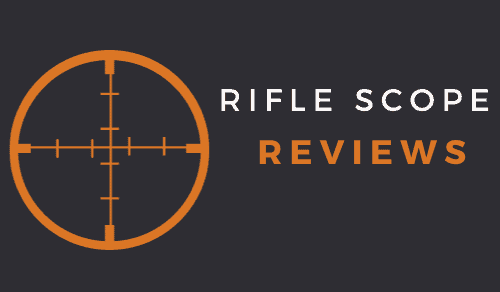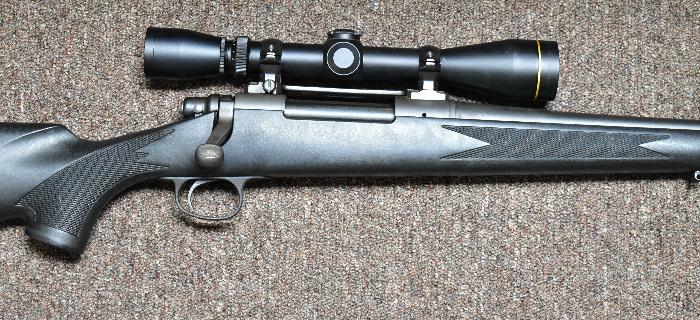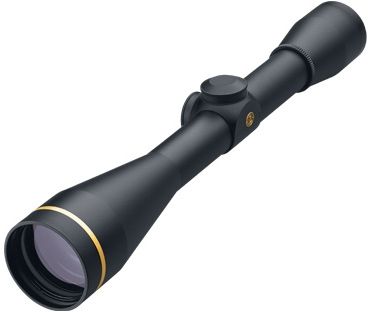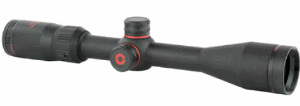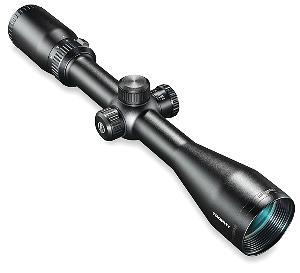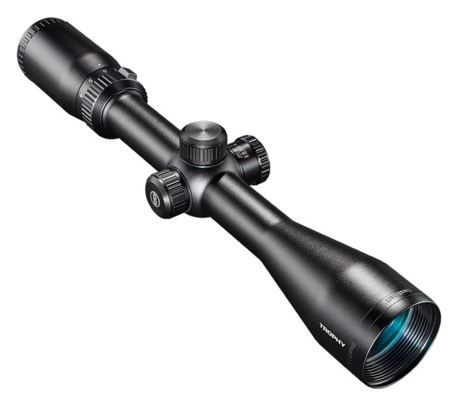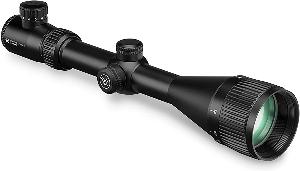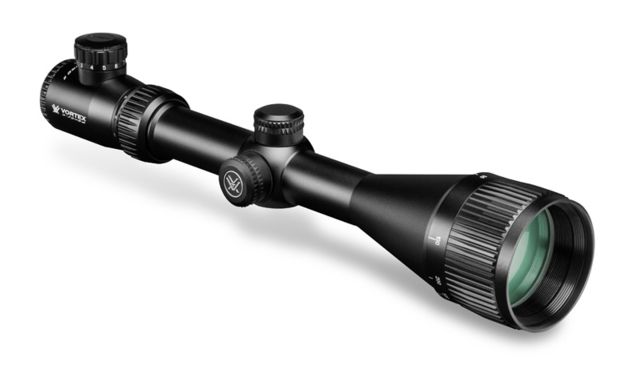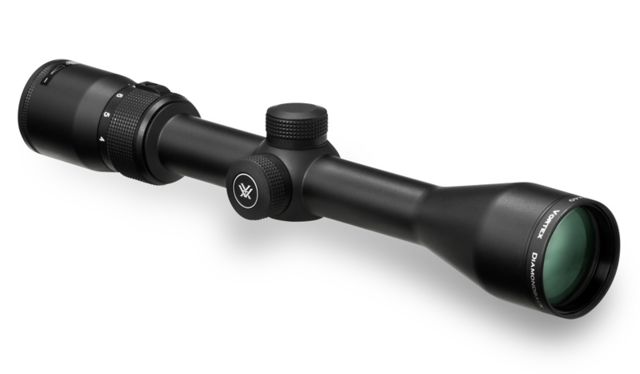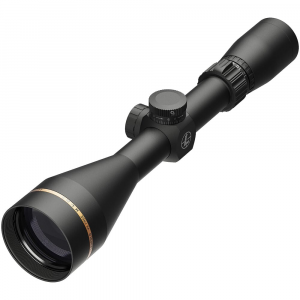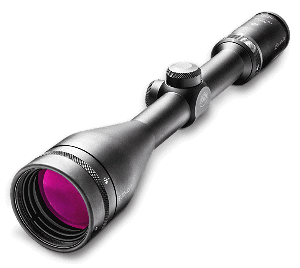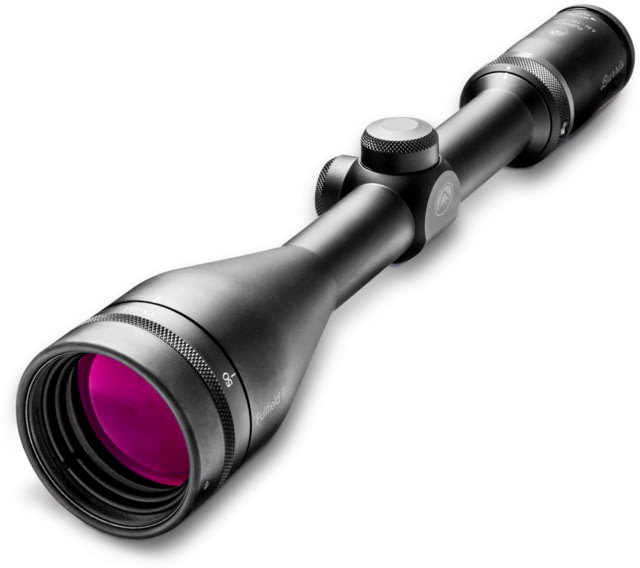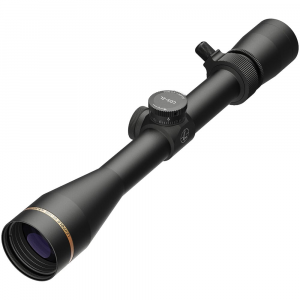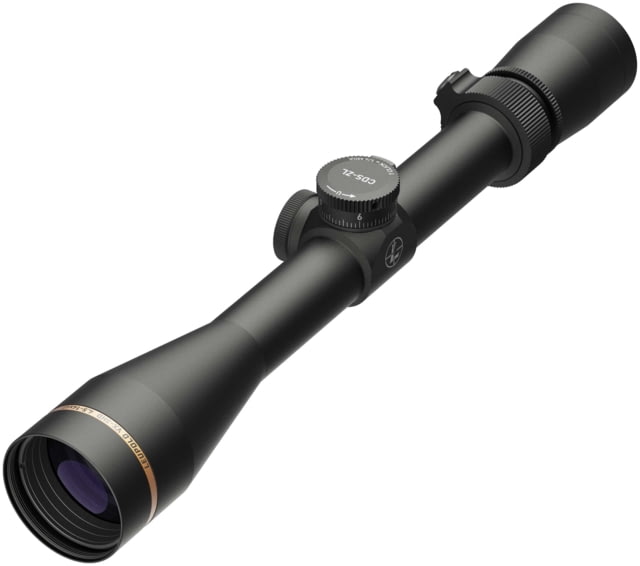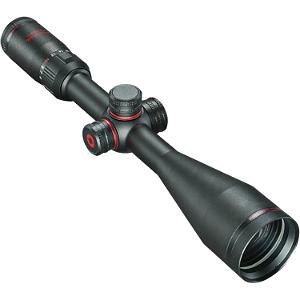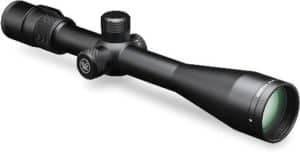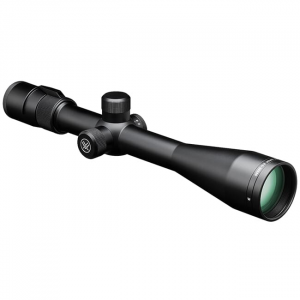As an Amazon Associate I earn from qualifying purchases. Amazon and the Amazon logo are trademarks of Amazon.com, Inc, or its affiliates.
Many hunters and shooters consider the Winchester 270 caliber to be the most versatile big game cartridge on the market. This opinion is based on the .270’s flat shooting ballistics and knock-down power at longer distances. Given its popularity as a hunting round, it shouldn’t be a surprise that I see quite a few 270 related questions at my day job.
While many questions deal with bullet weight, caliber questions, and optimum ammunition, one of the common questions I’m also asked is this one: what’s the best scope for a 270 Winchester rifle?

Many consider the .270 as the “king” of deer calibers as it is easily one of the most popular deer hunting cartridges currently being sold. As a caliber, the 270 Winchester has the following benefits:
- A mild to moderate recoil in comparison to terminal ballistics (knock-down power)
- Flat shooting round with little bullet drop out to 400 yards
- Commercial ammunition makers offer a wide variety of bullet weights and configurations for almost every North American big game
- Ammunition for this caliber is readily available and easy to purchase. Practically every sporting goods store will stock a few different .270 Winchester rounds.
- The caliber popularity means that almost every firearms manufacturer that produces rifles offers a rifle chambered in this popular caliber.
Now, you are visiting this page to read about .270 scopes, so let’s dive deeper into that topic. However, before I do, let’s take a second to discuss the history of the .270 Win cartridge.
.270 Winchester Caliber History
As the cartridge name implies, the .270 Winchester was developed by the Winchester Repeating Arms Company in 1923. It was specifically designed as a proprietary chambering for the Winchester Model 54 rifle introduced in 1925. The Model 54 would go on to become the basis of the ever-famous Winchester Model 70 rifle series.
According to Winchester, the .270 caliber is based on the rifle case of the German 8×57 Mauser. However, over the years, there has been an ongoing debate that the .270 was actually built off the venerable .30-06 Springfield case. While Winchester has acknowledged that the .270 “could” be built off a 30-06, they have held firm that it was designed off the .30-03 case associated with the 8×57 Mauser.
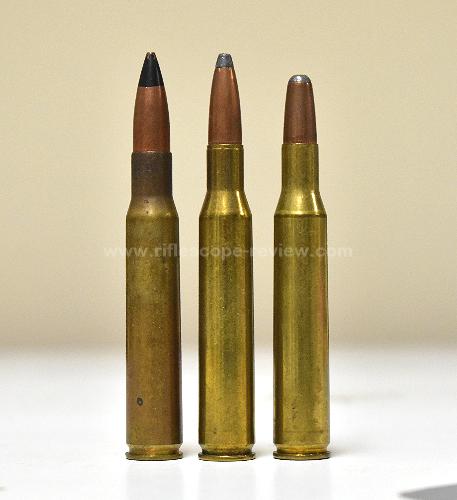
When the cartridge was initially introduced, it was not considered an immediate success. However, its popularity grew over time, and this was partly fueled by praise from gun writers and hunters such as Outdoor Life’s Jack O’Conner.
O’Connor was a prominent advocate of the .270 Winchester and successfully harvested nearly every big game species in North America with that caliber. He also took the caliber to Africa and harvested many mid-sized African big games species.
I’ve mentioned this before on the blog, but it’s worth mentioning again. My first exposure to the .270 Winchester was through an older Uncle who was also a major proponent of the 270. Like O’Connor, he was a prolific big game hunter. Also, he used the .270 Win to harvest a wide variety of North American game species, including a Polar Bear (although he wasn’t explicitly hunting polar bear on that trip, as the .270 isn’t the ideal caliber for an animal that size).
Initially, the .270 was only chambered in bolt action rifles, but, over time, the rifle options expanded to include:
- Pump-action rifles
- Single-shot rifles
- Lever actions
- Autoloading rifles (An example which I happen to own and is pictured on this page)
Today, the Winchester .270 is predominantly available in bolt action rifles.
.270 Winchester Scope Magnification Range
I wanted to discuss one last thing before getting into the riflescope suggestions, and that topic is scope magnification range for the .270.
The 270 Winchester is a very flat shooting cartridge with a legitimate range of 500 yards or farther in the hands of a capable shooter. Now, I’m not advocating that anyone attempt a shot at a game animal at 500 yards, but, with the right bullet load, the cartridge is more than capable of ethically taking some (but not all) big game animals at that distance.
I’ve personally seen a 270 used to ring steel at 1000 yards, and I’ve seen videos of someone hitting steel plates at 1500 yards with the caliber. So, the caliber has some range associated with it.
I say this to provide some context for choosing a scope power range for this caliber. Obviously, the area you hunt, coupled with your shooting experience, will play a role in your own personal comfort level regarding a maximum shooting distance with a 270.
For example, I mainly hunt in SE North Carolina and rarely shoot at whitetail deer at a distance exceeding 200 yards. My longest shot on a deer with a .270 was just a shade under 300 yards. Because of this, my 270 rifles are mostly equipped with 3-9 scopes.
However, if you hunt planned to hunt antelopes in the western part of the United States with a .270, then a 3-9 scope is probably on the short side for magnification. In that scenario, on the open plains, you very well could take a 500-yard shot, so you probably want a riflescope in the higher magnification range.
For most hunters, a scope in the 3-9, 4-12, or 4-16 power range will work well on a 270.
Top 10 270 Win Scope Options
Listed below are my top 10 scope options for a 270 Win rifle. Note that these suggestions are listed in order of magnification power, starting with the lowest powered riflescopes.
In each scope suggestion, I’ve included some scope basics, along with the things that I like and don’t like about each model. I’ve already included additional scope buying suggestions in a 270 Scope Buyer’s guide that can be seen down below.
Let’s get into a discussion about scopes:
Leupold FX-3 6×42 Wide Duplex (Model 66815)
The Leupold FX-3 scope is Leupold’s top-of-the-line fixed power scope and is primarily built for hunting. By fixed power, I mean that the magnification power on this model is fixed at 6x power.
If you want a simple to operate riflescope without any dials or adjustments to make, then a fixed power scope may be an option.
The beauty of a fixed power scope is its simplicity. You look through the scope and take your shot. Period.
Although I’m probably dating myself a bit here, I grew up with fixed power scopes as that’s the only scope style that my father and most of my uncles used. My first .22 rifle and my first deer rifle both had fixed 4 power scopes.
This FX-3 is light years ahead of the fixed power scopes I used as a kid. The optical quality is outstanding, and this scope features a nice, wide field of view.
Built on a 1-inch tube, this model is only offered with Leupold’s “Wide Duplex” reticle, and it works very well for hunting purposes.
The 4.4-inch eye relief is more than enough for the recoil of the .270.
| Pros | Cons |
| It comes with some of the brightest, clearest glass I’ve seen on a fixed power scope. I’ve only seen a select few European-made fixed power models with better glass.
More than reasonable eye relief With a weight of 13.6 ounces and a length of 13.2 inches, this model is a lightweight and compact scope. The wide duplex reticle is very popular for hunting applications. It’s covered under Leupold’s excellent Lifetime Warranty. This model features a wide field of view (FOV), which can be beneficial for hunting scenarios. Made in the USA (and you can’t say that for many riflescopes these days) |
This scope is costly for a fixed power scope, but it’s also a top-tier model.
Fixed (as in non-adjustable) parallax that is set at 150 yards. I’d prefer an adjustable parallax, but I can live without one on a centerfire cartridge. |
The following are the best bargains I could find for the Leupold FX-3 6×42 scope model:
Simmons Whitetail Classic 3-9×40 (Model WTC3940)
The Simmons Whitetail Classic scope series really is a classic scope line as it’s been around for several years. Very much like the name states, this series of scopes was explicitly designed for deer hunting, making it an ideal riflescope option for the .270.
The 3-9×40 configuration is still the most popular deer hunting scope configuration as it offers a magnification range that will cover almost any deer hunting scenario.
This riflescope model is built on a 1-inch tube and features a very generous eye relief range of 4.3-4.9 inches. That eye relief is more than enough for a 270 rifle.
This version of the Whitetail Classic weighs in at 17.6 ounces, so it’s not an overly heavy scope. All the Whitetail Classic scopes are built with Simmons’ patented Truplex reticle, which is basically just a modified duplex with crosshair posts that narrow down from thick to thin towards the crosshair intersection.
While these are quality, dependable scopes, they come in at an entry-level price point. That being said, Simmons makes a solid scope for the money.
| Pros | Cons |
| A good, entry-level scope with basic features.
Very affordably priced. Versatile 3-9 magnification range. |
The glass is about what you would expect for a scope in this price range.
Features a fixed 100-yard parallax. |
Bushnell Trophy 4-12×40 (Model 754120)
Much like the Simmons Whitetail Classic scope I mentioned above, the Bushnell Trophy series of riflescopes has also been around for quite some time. The Trophy series is probably still Bushnell’s top-selling series, and that is tied to the value that this series provides for the costs.
This model offers side focus, which is a feature that is not commonly found on scopes in the sub $200 price range. In addition to having a side focus, this scope model also offers parallax that adjusts down to 10 yards.
The 4-12 power range gives you just a little more magnification than the traditional 3-9 scopes, which can come in handy for longer-distance shots.
Built on a 1-inch tube, the Trophy 4-12×40 is a second focal plane model that comes with Bushnell’s highly versatile Multi-X reticle.
The optical quality on this model is better than expected in this price range and surprises many customers at my day job.
This model features a 3.5-inch eye relief, sufficient for most centerfire calibers, including the 270.
If you were shopping for an affordable mid-powered riflescope, then the Trophy 4-12×40 might be worth considering.
| Pros | Cons |
| Affordably priced with good features.
Comes with side focus and parallax that adjusts down to 10 yards. Well built and will hold up to recoil over time. |
The Bushnell warranty program is a lifetime model, but they put a 30-year time limit on warranty coverage. It a minor complaint, but I’d prefer lifetime to actually mean the entire life of the scope, regardless of years.
While the eye relief is good, I also find it to be just a bit sensitive to movement. It’s not a dealbreaker, but worth mentioning. Also, worth mentioning, I’m super picky about eye relief so take that with a grain of salt as well. |
Listed below are the best bargains I could discover for the Bushnell Trophy 4-12×40 scope series:
Vortex Crossfire II 3-12×56 V-Brite (Model CF2-31049)
If you wanted a little bit more magnification than a 3-9 power, then you may want to take a look at the Vortex Crossfire II 3-12×56 model with a V-Brite reticle. With a top-end magnification of 12X power, this model offers just a bit more magnification range for those mid-range to longer-range shots.
Built on a 30mm tube, this scope model also features a larger 56mm objective and an illuminated reticle. Both of these features make this model ideal for low-light shooting. Although Vortex previously called this particular model the “Hoghunter,” it works exceptionally well for deer and other big game species.
This scope is built with an adjustable objective that will focus down to 10 yards, which can be beneficial for short-range shots.
However, the larger 56mm objective, 30mm tube, and illuminated reticle all come at a price, and that price is weight. This scope weighs in at nearly 22 ounces, so it’s not a lightweight option.
But, if the weight isn’t an issue, it’s an excellent option for dawn and dusk shooting situations.
I happen to be a big fan of this scope, and we sell quite a few of these at my day job.
| Pros | Cons |
| Adjustable objective that focuses down to 10 yards (I’d prefer side focus, but can certainly make do with AO)
Illuminated reticle for low light shooting Super-versatile 3-12 magnification range The 30mm tube offers more room for internal elevation and windage adjustments. Great warranty program. |
Weighs nearly 22 ounces, so it’s not a lightweight option.
While the 56mm objective is helpful, it also means that you’ll need higher than average scope rings. The illuminated reticle can be a blessing and a curse as it means that you’ll have to deal with replacing batteries at some point. |
Here are least expensive deals I could locate for the Vortex Crossfire II 3-12×56 scopes:
Vortex Diamondback 4-12×40 Dead-Hold BDC (Model DBK-04-BDC)
Built on a 1-inch tube, the Vortex Diamondback 4-12×40 with a Dead-Hold BDC reticle is another good 270 scope option. This scope series is a no-frills workhorse type of optic that is built to last.
Optically speaking, the Diamondback series offers a slight upgrade in glass over the Crossfire II series I mentioned above.
This model is available with the Dead-Hold BDC reticle or the V-Plex reticle. Between the two, I much prefer the Dead-Hold BDC reticle as I find it to be a more versatile reticle, especially for longer-range shooting. However, if you prefer the more traditional duplex style V-Plex reticle (Model DBK-M-04P), it can be seen here.
If you take the time to learn the Vortex BDC reticle, you can easily extend your in-the-field shooting distances with a 270.
This scope offers a 3.1″ eye relief, which is sufficient for a 270, but I’d be hard-pressed to mount one on anything with a more substantial recoil.
With a length of 12 inches and a weight of 14.6 ounces, this model is a compact and lightweight option for any 270.
| Pros | Cons |
| Well built yet lightweight
Backed by Vortex’s outstanding lifetime warranty. The 4-12 power range will cover most shooting scenarios. |
This model features a fixed 100-yard objective (Not a dealbreaker, but I prefer an adjustable objective).
The eye relief is a bit critical on the critical side. |
The following are the best bargains I was able to discover for the Vortex Diamondback 4-12×40 with Dead-Hold BDC riflescopes:
Leupold VX-Freedom 4-12×50 CDS Duplex (Model 180602)
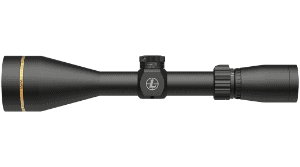 Another possible option for Winchester 270 glass is the Leupold VX-Freedom in a 4-12×50 configuration with the CDS Duplex. The 4-12 power range is ultra-versatile and is ideal for short to mid-range shots.
Another possible option for Winchester 270 glass is the Leupold VX-Freedom in a 4-12×50 configuration with the CDS Duplex. The 4-12 power range is ultra-versatile and is ideal for short to mid-range shots.
The VX-Freedom series is a step up above Leupold’s entry-level optics, but you really get quite a bit of scope for the money.
The optical quality on this model is very good for the costs, and it’s backed by Leupold’s lifetime warranty, which may be the best warranty program in the sporting optics industry.
While this scope is equipped with Leupold’s standard duplex reticle, this model also comes with Leupold’s Custom Dial System (CDS) turret. If you aren’t familiar with this set-up, it’s a custom elevation turret that is configured by Leupold and is based on the specific caliber, bullet configuration, bullet speed, etc.
You, as the shooter, provide all the necessary data to Leupold, and they send you a custom turret built to specifications. Once installed, you can dial the custom turret out to marked distances, and the bullet drop is already pre-configured into the turret. It’s basically a bullet drop compensation solution, and it’s a very slick set-up. One CDS turret is included with this scope, and this is a very cool system that flat out works.
To be clear, you do not have to utilize the CDS turret to use the scope. It functions just fine as a standard scope with a duplex reticle.
| Pros | Cons |
| Exceptionally well-built and durable optic.
Very clear and bright glass for the costs Fantastic warranty program Very good 3.7-inch eye relief. |
Built with a fixed 150-yard parallax.
A minor complaint but worth mentioning you have to purchase accessories like a sunshade or scope cover separately. Most optic brands include a sunshade with the scope 🙁 |
Listed here the best bargains I was able to discover for the Leupold VX-Freedom 4-12×50 with CDS Duplex model:
Burris Fullfield II 4.5-14×42 with Ballistic Plex Reticle (Model 200183)
If you happen to feel that you need more magnification range than a 4-12 optic, then take a look at the Burris Fullfield II 4.5-14×42 with Ballistic plex reticle.
The Burris Fullfield series of scopes has been their most popular seller for many years, and the Fullfield II is the 2nd generation of that classic riflescope series.
The 4.5-14 power range is ideal for situations where you may be shooting at longer range distances (say over 300 yards). The lower 4.5x power offers a wide field of view for short-range shots, while the higher magnification powers are available if needed.
While most of my 270 rifles have lower-powered scopes (3-9 power), I would definitely move to a higher 4.5-14 power if I headed out west to hunt. I prefer having the higher magnification available if needed.
Built on a 1-inch tube, this scope features an adjustable objective that will focus down to 50 yards and comes with eye relief of 3.1 to 3.8 inches.
Another feature I like with this scope is the Burris Ballistic Plex reticle, which has integrated BDC drop points in the reticle. Utilizing these drop points gives you the option to extend the shooting distances (if desired). However, if you choose not to use the BDC reticle points, this reticle also functions well as a basic duplex reticle.
| Pros | Cons |
| Burris Ballistic Plex reticle features optional BDC hold-over points that can be used for longer distance shooting.
The optical quality is better than average for a scope in this price range (sub $200). Adjustable objective that adjusts the parallax down to 50 yards. Good eye relief range Solid warranty program |
This is more a minor complaint and may just be me. While Burris offers a Ballistic Tools program to help configure the Ballistic Plex BDC points, I find the program hard to use for several reasons. You’re better off using a 3rd part program for that configuration.
Weighs 18 ounces, which is a bit heavy for a 1-inch scope in this power range. |
The following are the best bargains I was able to track down for the Burris Fullfield II 4.5-14×42 with Ballistic Plex Reticle scope model:
Leupold VX-3HD 4.5-14×40 CDS-ZL Boone & Crockett (Model 180620)
If you wanted to jump up in price on a scope for your 270, then check out the Leupold VX-3HD 4.5-14×40 with the CDS-ZL Boone & Crocket reticle.
The VX-3HS series is a mid-range riflescopes series that is a higher-priced option than the VX-Freedom scope I mentioned before. The VX-3HD offers top-shelf optical quality combined with outstanding performance in the field.
Built on a 1-inch tube, this riflescope model with the Boone & Crockett reticle is made specifically for hunting and low light shooting situations.
The B&C reticle is a proprietary reticle application that Leupold developed with input from the Boone & Crockett club. It featured integrated bullet drop compensation marks that offer aiming points out to 500 yards for the .270 Win. In addition, this model also integrates with the Leupold CDS turret system I previously discussed. If desired, one could have Leupold build a CDS dial made specifically for the .270 that fully integrates with the B&C reticle.
While the VX-3HD is one of the more expensive scopes on this list, it’s an outstanding scope for the .270 Winchester caliber.
| Pros | Cons |
| Excellent optical quality that is bright and clear.
The B&C reticle is great for hunting and situations where you might want to shoot at farther distances. Comes with one free CDS dial turret that can be configured for the 270 for even greater long-distance flexibility. |
Fixed parallax that is set at 150 yards. With a scope in this price range, I’d prefer an adjustable parallax feature.
You pay a slightly higher cost associated with the B&C reticle, but I think it’s worth it. |
Listed here least expensive bargains I could locate for the Leupold VX-3HD 4.5-14×40 CDS-ZL with Boone & Crockett reticle:
Simmons Whitetail Classic 6-24×50 (Model WTC62450)
If you wanted a riflescope in the higher power ranges, then have a look at the Simmons Whitetail Classic in a 6-24×50 configuration with Truplex reticle.
Some might argue that a 6-24X is too much magnification for a Winchester 270, but I’ve always preferred to have the magnification and not need it versus needing it and not having it.
There are two common drawbacks to a riflescope in this power range, and they are:
- Decreased eye relief
- Reduced field of view at higher magnification
Here’s the low-down on both concerns:
Decreased eye relief
You do typically see that, as the power magnification increases on a riflescope, the amount of eye relief decreases. This is not always the case, but it does happen.
This particular scope model features an eye relief of 3.1 inches, so I’d consider it usable for a 270 but wouldn’t want to mount this on a .338 Lapua.
Reduced field of view at higher magnification
Another common issue observed with higher magnification scopes is that field of view substantially decreases as the magnification power increases. For example, on this particular scope, the field of view at 100 yards on 6x power is 17.5 feet, but it decreases to 4.5 feet on 24x power.
This issue affects almost all higher-powered scopes and is one of the more common adverse effects of the increase in power magnification. The higher the power magnification increase, the smaller the FOV.
The optical quality on this scope is about what you would except for one priced in this range (sub $150) because you are paying for the increased magnification range.
Built on a 1-inch tube, this model also features a side focus parallax adjustment that focuses down to 50 yards. This version comes equipped with the Simmons Truplex reticle but was also offered with a mil-dot reticle. Note that the mil-dot reticle version did not feature side focus.
But, if you wanted a budget-friendly higher-powered scope, then this Simmons might be worth considering.
| Pros | Cons |
| Solid, dependable riflescope made for hunting.
Side focus that goes down to 50 yards. Well priced for the magnification range. |
Average optical quality for the money.
3.1″ eye relief is Ok but could be better. The warranty program is about average for the industry. |
Vortex Viper 6.5-20×50 PA (Model VPR-M-06BDC)
The last 270 riflescope on my list is the Vortex Viper 6.5-20×50 PA with the Dead-Hold BDC reticle. This model would be another potential scope if you wanted something in the higher power magnification ranges.
Built on a 30mm tube, the Viper PA is available in two reticle options:
- Dead-Hold BDC (Model VPR-M-06BDC)
- Mil-Dot (Model VPR-M-06MD)
In most Vortex reticle comparisons, I prefer the BDC, but, in this case, I like and can shoot either reticle. If you don’t have any prior experience with a mil-dot reticle or don’t have any interest in learning how to use a mil-dot reticle, then the Dead-Hold BDC reticle is probably a better option.
This model is also equipped with a side focus feature that adjusts down to 50 yards. The 3.1 inches of eye relief is sufficient for the moderate recoil of the 270 cartridge.
This model weighs in at nearly 22 ounces, so it’s not exactly a lightweight optic, and that should probably be taken into account when shopping.
That being said, I’m a big fan of this optic, especially if you have an interest in pushing your 270 out to its maximum distances.
| Pros | Cons |
| This optic is built like a tank (but that comes with additional weight).
Covered under Vortex’s fantastic lifetime warranty (which is easily one of the top warranty programs in the optics industry). Equipped with side focus that focuses down to 50 yards. Good optical quality at this price point for this magnification range. |
At almost 22 ounces, this is not a lightweight scope. It’s not overly heavy either, but it’s not light compared to the other scope options on this list.
The 3.1 inches of eye relief is decent, but I’d love to see Vortex offer this model with longer eye relief. |
The following are the best bargains I was able to discover for the Vortex Viper 6.5-20×50 PA with Dead-Hold BDC reticle:
Honorable Mentions
The honorable mentions riflescopes are scope models that I also like for the 270, but these models are either out of production, phased out, or very hard to find.
Leupold VX-3i 3.5-10×40 (Model 170680)
The Leupold VX-3i in a 3.5-10×40 configuration was one of Leupold’s top-selling models for years. It combined the versatility of the 3.5-10 power range, good quality optics, mated to a very reasonable price point.
Leupold opted to phase this scope model out in 2020 and replaced it with the VX-3HD scope series launched in 2021. While I do not doubt that the VX-3HD version in 3.5-10×40 will be an equally good seller, there are plenty of hunters out there who’ll never part with their VX3i scopes.
The glass on the VX-3HD series seems to be a little bit better than the 3i series, but it also comes with a higher price point.
If you happen to be one of the diehards who prefer the VX-3i scope in the 3.5-10×40 configuration, there are still a few available here and there:
Nikon Prostaff P5 3-12x42SF (Model 16620)
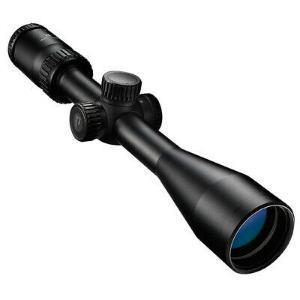 Another of my favorite riflescopes for the 270 caliber is the Nikon Prostaff P5 in a 3-12×42 configuration with side focus and the Nikon BDC reticle.
Another of my favorite riflescopes for the 270 caliber is the Nikon Prostaff P5 in a 3-12×42 configuration with side focus and the Nikon BDC reticle.
The Prostaff P5 series was one of the top-tier series within the Nikon Prostaff family of scopes. Built on a 1-inch tube, this scope model featured a side focus feature that would adjust down to 50 yards (which was pretty much the minimum default focus distance for most all Nikon scopes).
This model also featured Nikon’s patented BDC reticle, which could be used on its own or integrated with Nikon’s own SPOT-ON ballistic calculation program.
Unfortunately, this scope model was phased out of production when Nikon stopped producing riflescopes in 2019.
However, there are still a few new models of this specific scope floating around, and those can be seen below:
270 Scope Buyer’s Guide
When shopping for a new scope for your 270 Winchester rifle, here are a few factors to take into consideration:
Scope Magnification Power for a 270
I briefly touched on this topic above, so I don’t want to repeat all that information again.
For most hunters and shooters, a riflescope in the 3-9x to 4-12x power range will be ideal for a 270 Winchester. If you prefer something with a little more power, then consider a riflescope in the 4-14x or higher magnification range.
Keep in mind that those recommendations are just rough guideline suggestions. At the end of the day, it’s your money, so buy whatever power scope meets your needs and makes you happy.
Eye Relief
The eye relief is a fancy term used to describe the distance that the eye has to be from the scope in order to see a clear image. This measurement is expressed in inches, and it plays a role because you want a riflescope with enough eye relief so that the recoil from the rifle does not cause the scope to impact your face.
This is commonly called “scope bite,” and it’s not a pleasant experience. Scope bite is one reason why not every riflescope is the ideal candidate to mount on a centerfire rifle or shotgun. The more significant that the recoil is, the longer the eye relief needs to be.
The recoil on a 270 is generally described as being “moderate,” but that description is only a general guide. Your own perception of recoil will determine your personal interpretation levels of mild, moderate, and heavy amounts of recoil.
Take the two 270 rifles I have in the images on this page. One is a Remington 7400 semi-automatic 270, while the other is a Remington 700 bolt action chambered in 270. Between the two rifles, I find that the Remington 700 has the heavier recoil. This is most likely tied to the fact that the 700 has a polymer stock, so it weighs about 2 pounds less than wood stocked 7400. I would classify the recoil on the 7400 as mildly moderate, but I would describe the 700 bolt rifle as being right at the top end of the “moderate” recoil level.
Personally, I want a scope with an eye relief of 3 inches at a minimum (preferably more) on a 270. And, in the case of my Remington 700, I have a scope with 4 inches to 4.2 inches of eye relief.
Your level of acceptable eye relief may vary, but I would suggest erroring on the side of “more eye relief is better” because scope bite can really hurt. And it can ruin your family holiday pictures because you look like you got in the ring with Mike Tyson.
Reticle Options
These days there are hundreds of different reticle choices in the optics industry. Almost every optic brand wants to be different, so they create their own reticles, and most are just minor variants on more basic reticle options.
The 270 is mainly used as a hunting caliber, so I’d suggest leaning towards a reticle that can be used for hunting purposes.
My favorite reticle options for a 270 are (in no particular order):
- Duplex reticle or variation of a duplex reticle
- BDC-based reticle.
- Mil-dot reticle (a tried-and-true option that can be used as a duplex or used as a BDC based reticle)
I’d suggest staying away from reticle options specifically built for long-range target shooting as they tend to be challenging to see in low light or unnecessarily busy or cluttered.
Scope Focal Plane
As you research riflescope options, I’m sure you will see references to first focal plane scopes and second focal plane scopes. Here’s a link to more information if you are not sure what a first focal plane scope (or FFP scope) means.

While you could certainly hunt with an FFP scope, most hunters will be better served with a second focal plane scope (and all the scopes I’ve discussed above are SFP models).
The real advantages found with a first focal plane scope are best suited for dedicated long-range shooting situations, and most hunters are not going to extend the range of a 270 out past the 500-yard mark (that’s not to say that you can’t, but most hunters understand their own ethical limits).
With practice or via a BDC reticle, ethically taking most big game species (with most being the operative word) out at the 400- or 500-yard range is possible. Obviously, many factors will come into play when deciding to shoot at a game animal at that distance.
However, most hunters will be shooting at distances under 500 yards, so a second focal plane scope will work (and has worked for the last 50 plus years) just fine.
Scope Tube Size
The scope tube size is a term used to describe the size of the tube, and the number is usually displayed in either inches or millimeters.
The two most popular tube sizes on the market today are 1 inch and 30mm. The 1-inch tube is the more classic tube size as it’s been in use for decades. The 30mm tubes are a newer option that started becoming popular up in the last ten years.
Tube size doesn’t play a role in the brightness of a scope or the “amount of light” that the tube lets in. Those are more just marketing ploys designed to sell you a larger riflescope that is more expensive.
Where tube size does play a role is the overall weight of the scope. Typically, the larger 30mm scopes tend to weigh more than their 1-inch counterparts. There are exceptions to that rule as well.
So which tube size is better?
While either tube size will work just fine on a 270, I’d offer the following suggestions:
- If scope weight is a significant factor in your buying decision, then I’d suggest limiting your options to a 1-inch tube as they nearly always weigh less.
- If you’re shopping on a strict budget, then I’d suggest restricting your options to the 1-inch models as well because the larger 30mm models tend to cost more as well.
- If weight or cost is not a major factor, then the 30mm models usually offer a few benefits such as additional elevation and windage adjustment range and other features like side focus.
You really can’t go wrong with either tube size, but I would stay away from a larger 34mm tube scope as those are predominantly built for dedicated long-range shooting or precision-based LVPO shooting.
FAQS
Here are some frequently asked questions that I both see and have been asked regarding 270 riflescopes:
What’s the best scope for a 270 Remington?
I’ve always found this question to be a bit confusing because it almost sounds as if someone is asking from the perspective that the 270 Remington is a unique caliber. It’s not a commercially available caliber, so I’m assuming that the question is really asking about the best riflescope options for a Remington rifle chambered in 270.
I’ve said this 100 times on this site: identifying something as being the “best” is wholly based on opinions and experiences. That being said, any of the riflescope models I discussed above would potentially be a good optic for a Remington 270.
What is the best Leupold scope for a 270?
Leupold makes several excellent riflescope options that are ideal for use on a .270 Winchester rifle. My two favorite Leupold scope options for the 270 caliber are listed above.
What’s the best BDC scope for a 270 Win?
Before I start answering this question, if you are not familiar with a BDC scope or how they work, here’s a link to another page where I dive deep into Bullet Drop Compensation riflescopes.
Given the flat shooting nature of the 270 coupled with its effective killing range, I can understand the interest in mounting a BDC scope on a .270 rifle.
Something to mention as part of this discussion: Since the 270 is such a flat shooter, you see very little bullet drop out to the 200-yard mark. Because of this, a BDC-based scope really only becomes useful if you are shooting out past the 200-yard mark. BDC scopes begin to show their potential value at the 400- and 500-yard distances.
When discussing BDC scopes for the 270, you’ve got two different groups of riflescopes to consider:
- General non-caliber specific BDC scopes
- 270 caliber specific BDC scopes
General Non-caliber Specific BDC Scopes
BDC scopes that fall into this category are models that offer a BDC reticle but are not caliber specific. By non-caliber specific, I mean that the shooter has to use ballistic math software or good ole fashion range time to determine the BDC aiming points for his or her particular rifle configuration.
Most rifle scope brands offer an in-house ballistic mathematics program that integrates specifically with their brand BDC reticle. For example, Vortex offers its Long Range Ballistic Calculator program that integrates perfectly with the Vortex Dead-Hold BDC reticle.
With these types of BDC reticle configurations, the shooter has to provide specific data points like bullet load, bullet weight, velocity, etc.; and the software identifies the BDC impact points based on yardage.
270 Caliber Specific BDC Scopes
BDC scopes that fall into this category are built specifically for the 270 caliber. The BDC reticle or BDC turret is pre-configured for specific 270 bullet styles and weights.
This style of BDC scope is popular because all the ballistic math is already done for you and built into the reticle or turret.
The downside with this BDC scope style is that it’s built for a specific bullet weight with a particular velocity, and the BDC math is only valid when using that specific bullet at that particular velocity.
The more popular 270 specific BDC scopes are these:
- BSA Sweet .270 3-9×40
- BSA Sweet .270 4-12×40
- Any Leupold scope with the CDS Dial System (can be built to a 270)
There may be a few other models on the market, but these are the ones that I’m most familiar with.
Are 270 Winchester and 270 WSM the same caliber?
While they look and sound very similar, they are two completely different calibers.
The 270 WSM is an abbreviated name for the 270 Winchester Short Magnum, and it’s basically a 270 Winchester on steroids. The 270 WSM tends to generate bullet velocities that average about 250 feet per second faster than the original 270 Winchester.
Since the 270 WSM is also a shorter cartridge compared to the 270 Winchester, it can be used in a shorter, more compact action (hence the “Short” part of its name).
And with that added power of the WSM comes more felt recoil (at least in my experience).
Does Nikon make a BDC scope for the 270 Winchester?
While Nikon offered several riflescope models with a BDC reticle option, I’m not aware that they ever offered a 270 caliber specific BDC scope.
However, using Nikon’s SPOT-ON ballistic program, it’s relatively easy to configure almost any Nikon BDC scope, so the BDC point integrated with the .270 Winchester caliber.
As I come across more questions related to this topic, I’ll update this page accordingly.
I’ve been working in the firearms and sporting optics industry for over 20 years, with a personal and professional interest in all things related to rifle scopes, Through a combination of work experience, formal training, and personal experiences, I have extensive experience mounting, testing, and evaluating different rifle scope models across most major optical brands.
